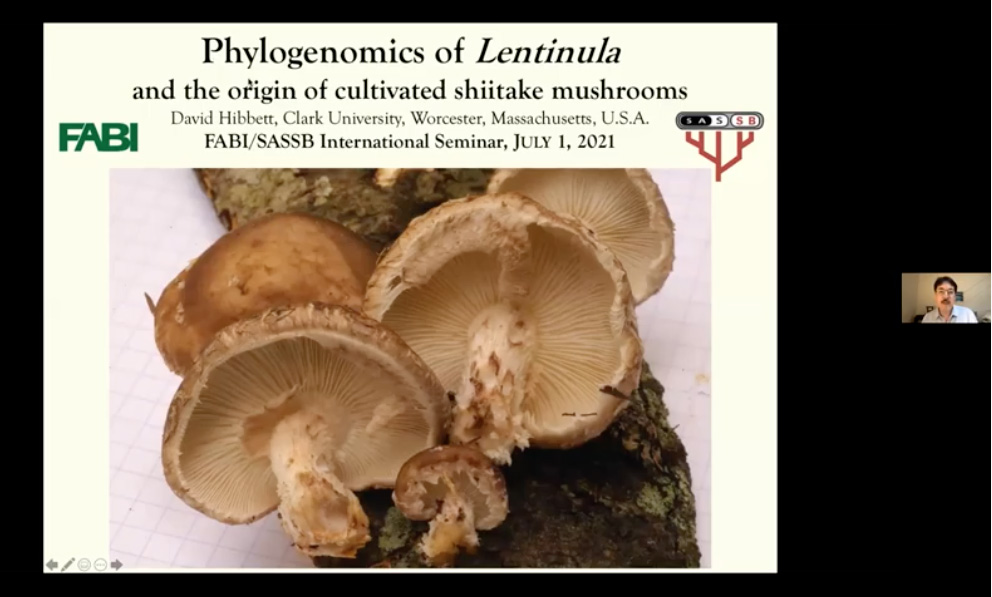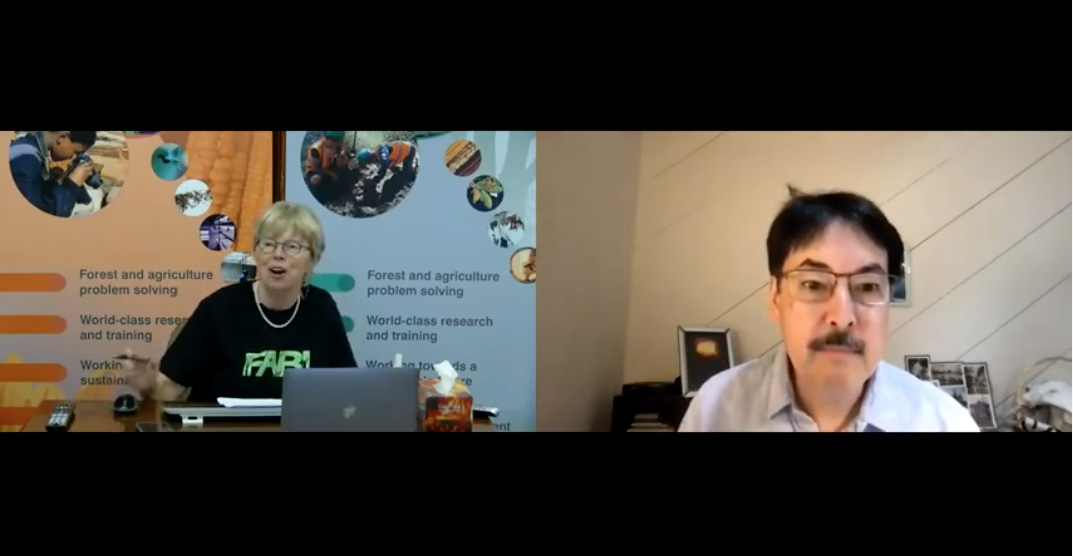Joint FABI-SASSB fungal evolution symposium 2021-07-08
FABI and the Southern African Society of Systematic Biology (SASSB) jointly hosted a webinar with the theme ‘Fungal evolution’ on 1 July. The keynote speaker was Dr David Hibbett of Clark University in Massachusetts, USA who spoke on the “Phylogenomics of Lentinula and the origin of cultivated shiitake mushrooms”. This presentation can be viewed by clicking here.
Shiitake (Lentinula edodes) is the number one species of cultivated edible mushrooms in the world primarily from Asia-Australasia and two in the Americas. Since then, three more species have been described, two in the Americas and one in Africa (Madagascar). A second African species may occur in the Democratic Republic of the Congo. David described how he used phylogenetics and phylogenomics to understand the diversity and evolution of Lentinula. Phylogenies based on 343 ITS and 116 tef1-α sequences resolve about 14 species-level lineages in the genus. We generated 25 new Lentinula genomes with a broad geographic and taxonomic representation and added four published genomes. He also assembled and annotated 60 genomes from Chinese material, previously published as unassembled raw reads.
FABI PhD candidate Wilma Nel presented findings from her Doctoral thesis entitled “Phylogenomic analyses resolve taxonomic ambiguity for two new genera in the Ophiostomatales”. Continued discovery and description of fungal species has meant that currently available DNA barcodes often fail to conclusively delineate many genera and species. Consequently, the increasing availably of whole genome sequence data is emerging as an important tool to clarify these ambiguous taxonomic relationships. The Ophiostomatales (Ascomycota) accommodates more than 300 species characterized by similar morphological adaptations to arthropod dispersal. She investigated the occurrence and taxonomic novelty of ophiostomatalean-like fungi from the Termitomyces fungus combs of fungus-farming termites. The results provided sufficient evidence to introduce two new genera (Intubia and Chrysosphaeria) residing in a broadly defined Ophiostomatales. Three new species, Intubia macrotermitinae, Intubia oerlemansii and Chrysosphaeria jan-nelii were described in these genera.
The third speaker was Aiden Visagie a postgraduate student at Stellenbosch University whose presentation “Isolation and identification of Penicillium from wheat associated agricultural soils,” described how isolations from wheat growing agricultural soils resulted in 633 Penicillium strains. South Africa is a fungal biodiversity hotspot and contains many undescribed fungi. Penicillium occurs worldwide and affects humans and animals in many ways. Their importance necessitates a stable taxonomy that allows researchers to easily identify strains to species level. These were identified using mainly beta-tubulin sequences. These strains were screened for potential PGP (Plant Growth Promoting) properties, in the form of Phosphate solubilization (PS) activity, as well as Indole acetic acid (IAA) production. The five best performing strains were used in potting trials, to test their ability to affect wheat plants development (IAA) and available soil phosphorus (PS) and therefore assist plant growth.




